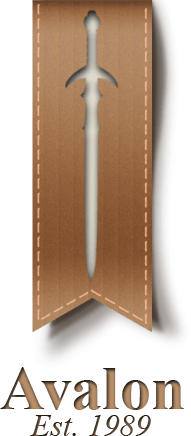Forging is your ability to forge a piece of weaponry or armour (or certain metallic objects). Forging is done via an arduous process: first you must smelt your chosen ore in the furnace (see HELP FURNACES for information on stoking and lighting furnaces) starting with FURNACE WITH <ore>, and once it is filled with ore, you SMELT. This will produce an ingot of size and density depending on how much ore was used. This ingot will require an initial cooldown period before you proceed to hammer it into a weapon or piece of armour or a metal object.
Syntax: HEAT <ingot/weapon/armour>.
Heating comes first. It initiates the short forging sequence.
Syntax: HAMMER <ingot/weapon/armour>.
This is the second stage in the forging process. It beats out the ingot or weapon/armour, ready for pounding or folding.
Syntax: POUND <ingot/armour> or FOLD <ingot/weapon>.
You need to complete the heat-hammer-fold or heat-hammer-pound procedure a number of times, depending how much ore is in your ingot and which weapon, armour or object you are forging. There will need to be at least one heat-hammer-fold or heat-hammer-pound per piece of ore in the ingot.
Syntax: POUND <ingot> <armour shape> or FOLD <ingot> <weapon shape>.
Once you deem you have pounded or folded enough, you can forge the ingot into the correct shape for the weapon, armour or object being forged. This is done using the same HEAT then HAMMER then POUND/FOLD procedure but this time you need to append the forged object onto the POUND/FOLD command e..g. POUND INGOT BREASTPLATE or FOLD INGOT DAGGER.
At this point you will have the most basic, most imperfect version of the weapon, armour or object you have forged, i..e. a weapon with the lowest possible stats, armour with the lowest possible coverage and repair, etc. Including more ore than the minimum will ensure your imperfect version is further advanced than those pounded fro the bare minimum ore.
You can improve the quality of your weapon, armour or object by subjecting it to the HEAT, HAMMER and POUND/FOLD procedure after it is no longer an ingot. Each iteration will advance its state of repair and its stats. This can also be done to existing weapons and armour to restore them to better state of repair.
The limit to your ability to improve the weapon, armour or object quality is defined by your Forging/Wepaonry skill, the weapon/armour shape being used (i..e. helmets cannot protect like platemail, daggers will not attack like rapiers), and the amount of ore (especially above and beyond the minimum) being used. More ore in the initial ingot also accelerates the improvement brought about by each heat-hammer-pound or heat-hammer-fold iteration.
Syntax: DET <weapon/armour/metal object>.
Use DET (short for DETERMINE) on the weapon, armour, object or ingot to discern its ore content - including which metal is most prominent.
Syntax: FORGING [<weapon/armour>].
Use the FORGING command to gain an overview of the weapons and armour you might be able to forge, including the ore required and the stats you should expect to be making. Type FORGING followed by the weapon or armour to see all the types of that weapon or armour shape you might be able to forge, providing your ingot is of the correct metal content e..g. FORGING DAGGER or FORGING SHIELD.

